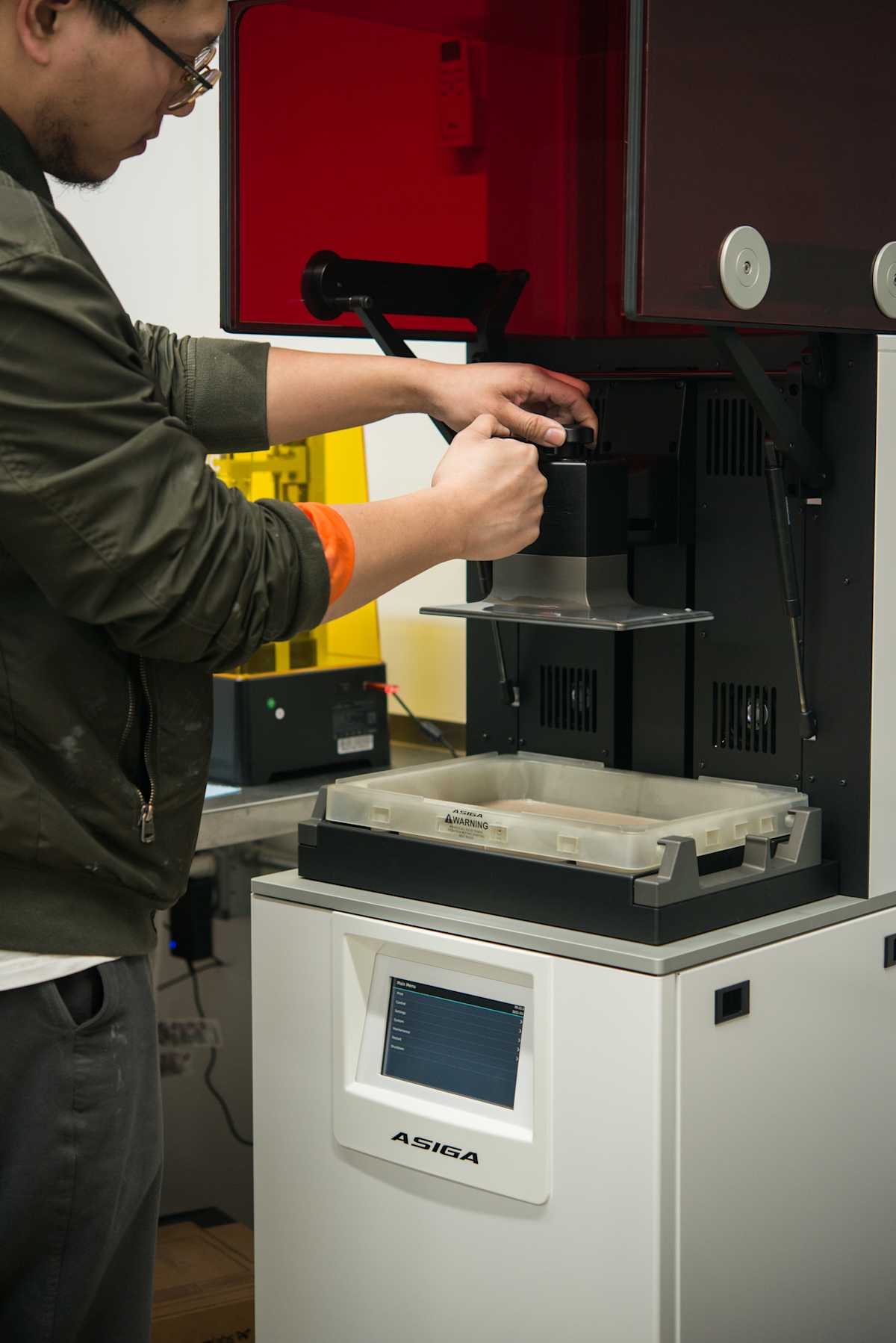The 3D printing process typically involves these key steps:
Creating a 3D model: Using CAD (computer-aided design) software, designers create a digital 3D model of the object.
Preparing the file: The 3D model is converted to a printable format (usually STL) and "sliced" into thin layers using specialized software.
Printing: The prepared file is sent to a 3D printer, which builds the object layer by layer according to the design.
Post-processing: Many printed objects require finishing touches like removing support structures, sanding, or painting.
There are several different 3D printing technologies, each with its own strengths:
Uses thermoplastic filaments
Melts and extrudes plastic through a nozzle
Good for functional prototypes and basic parts
Materials: ABS, PLA, PETG, Nylon
Uses liquid photopolymer resin
Cures resin with a UV laser
Excellent for high-detail models and smooth surfaces
Materials: Various resins (standard, tough, flexible, castable)
Uses powder materials
Fuses powder with a high-power laser
Great for complex geometries and functional parts
Materials: Nylon, TPU, PEEK
Technologies include DMLS (Direct Metal Laser Sintering) and EBM (Electron Beam Melting)
Creates fully dense metal parts
Used for aerospace, automotive, and medical implants
Materials: Titanium, Aluminum, Stainless Steel, Inconel
3D printing is making waves across numerous industries:
Manufacturing
Rapid prototyping for faster product development
Custom jigs and fixtures for production lines
Small batch production of specialized parts
Example: Boeing uses 3D printed parts in its aircraft, reducing weight and assembly time
Healthcare
Patient-specific prosthetics and orthotics
Dental implants and aligners
Anatomical models for surgical planning
Bioprinting of tissues and organs (research stage)
Example: Adidas creates custom 3D printed midsoles for running shoes
Aerospace
Lightweight components for aircraft and spacecraft
Rapid iteration of complex parts
Example: SpaceX 3D prints the SuperDraco engine chamber for its Dragon spacecraft
Architecture
Detailed scale models of buildings and landscapes
Custom architectural elements and fixtures
Exploring new forms and structures
Example: Some companies are experimenting with 3D printing entire houses
Consumer Products
Customized jewelry and accessories
Replacement parts for household items
Unique toys and collectibles
Example: Invisalign uses 3D printing to create custom clear dental aligners
Education
Hands-on learning tools for STEM subjects
Creating visual aids and models
Encouraging creativity and innovation
Example: Many schools now incorporate 3D printing into their curriculum
Art and Design
Sculptures and installations
Fashion accessories and textiles
Film and theater props
Example: Designer Iris van Herpen uses 3D printing in her haute couture collections
Design Freedom: Create complex geometries impossible with traditional manufacturing
Customization: Easily modify designs for individual needs
Rapid Prototyping: Iterate designs quickly and cost-effectively
On-Demand Production: Print only what's needed, reducing inventory
Material Efficiency: Less waste compared to subtractive methods
Lightweight Structures: Create strong yet lightweight parts using lattices and topology optimization
Part Consolidation: Combine multiple components into a single printed part
While 3D printing has come a long way, there are still challenges to overcome:
Speed: Many 3D printing processes are still relatively slow for mass production
Materials: Expanding the range of printable materials and their properties
Size Limitations: Many printers have limited build volumes
Post-Processing: Many parts require finishing steps after printing
Quality Control: Ensuring consistency across prints and machines
The future of 3D printing looks bright, with ongoing research and development in areas such as:
Multi-material printing
Faster printing technologies (e.g., CLIP - Continuous Liquid Interface Production)
Improved software for design and print preparation
Integration with other manufacturing technologies
Sustainability and recycling of 3D printing materials
3D printing is revolutionizing the way we design, manufacture, and consume products. From rapid prototyping to custom medical implants, this versatile technology is opening up new possibilities across countless industries. As 3D printing continues to advance, we can expect to see even more innovative applications that push the boundaries of what's possible in manufacturing and beyond.
Whether you're a designer, engineer, entrepreneur, or simply curious about new technologies, understanding 3D printing can provide valuable insights into the future of production and creativity. As this technology becomes more accessible and capable, it's exciting to imagine the new products and solutions that will emerge from the world of additive manufacturing.
